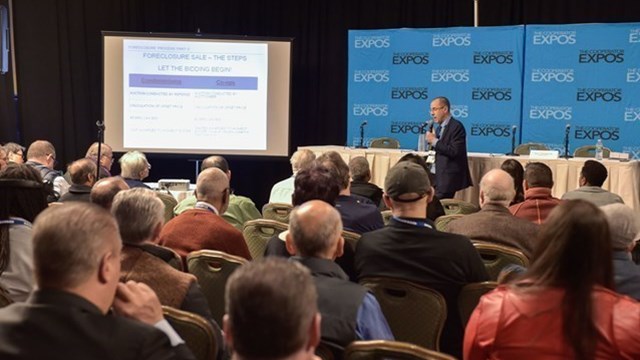It's Friday night and you've just arrived home from a long week at work. Picking up your mail, you head upstairs in anticipation of a cold drink and a hot bath. But when you enter the bathroom, you find a quarter inch of water covering the floor! A weekend plumbing leak--a building manager's nightmare!
Fortunately, you live in a building where the super is on the ball; an inventory of parts is kept on hand, a reliable plumber can be reached in a jiffy, and by 8 pm you're up to your neck in a therapeutic mineral bath.
Not every building has such a foolproof plan for corrective maintenance. Many supers fail to maintain an inventory of parts, don't check stock regularly, and have trouble forging working relationships with professionals willing to come out at all hours. For building residents, the difference between the two levels of performance can turn a routine repair into a nightmare.
A Primary Budget Item
Maintaining your building as efficiently and cost-effectively as possible is one of the primary challenges of any property owner. For co-op and condo boards, who are financially responsible for their neighbors' most valuable investments their homes--this tough job is especially important. Maintenance expenses can account for as much as 15 percent of any building's budget, with the percentage rising even higher in older buildings. By implementing a well-thought-out maintenance plan, your building can keep those costs down while increasing the comfort level and quality of life of every building resident.
There are numerous facets of maintenance, from preventive maintenance to routine maintenance to emergency maintenance. But when dealing with the day-to-day repair or replacement of broken building components, corrective maintenance is the term I prefer to use. The system that your building develops will depend somewhat on whether it's a co-op or a condo, how old the building is and what size budget you have to work with. But any effective maintenance system must include planning, an inventory of supplies, open lines of communication, a well-trained staff and good record-keeping.
Keeping Track of Parts
The importance of keeping parts and supplies on hand is illustrated all too clearly by the above scenario. Everythingfrom bulbs to boilershas a life expectancy. Almost everything eventually needs to be replaced due to wear and tear. A properly maintained list and stock of supplies reduces both the inconvenience to residents and the cost of the repairs. If the part is on hand when a leak arises, the plumber does not have to go out and procure it on the building's time. In addition, the building avoids paying the extra ten to 20 percent the plumber would tack on to the price. What's more, some parts are hard to find on a weekend or in the middle of the night. With the right parts on hand, the repair can be performed quickly, with minimum down-time and incon-venience to residents.
Inventoried parts must be logged in, counted and kept in a secure place with limited access by only a few persons. Routine stock checks should be performed and parts low in stock replenished as necessary.
Another aspect of corrective maintenance that must be looked at is the filling out of work orders. Lobby personnel should be trained to ask the right questions of residents in order to get as much information about the problem as possible. The maintenance staff should follow up on uncompleted work and anticipate other problems that may exist in addition to what is mentioned in the work order. The superintendent or resident manager needs to control the entire process by filing, training and coordinating the efforts of the staff and outside repair personnel.
Communication is Key
Proper communication plays a very important role in maintaining a steady flow of information. Communication usually starts with the resident's complaint and ends with the resident being notified of the completion of the repair or the expected course of action. The building staff needs to create a paper trail outlining the problem and what was done. This could be helpful in the event that legal problems arise and will also be appreciated by the building's accountant.
Key elements of proper commu-nication are consistency and accountability. Work orders filled out by residents should be numbered. Records of the work done, by whom, date of completion and materials or parts used should be filed. A log book or computer can be helpful in maintaining a summary of these exchanges.
On-Going Evaluation
Once your building has developed an effective plan, the board should evaluate its effectiveness routinely. Four factors to be considered are:
1. Have savings been achieved on overall maintenance costs over the same period last year? Do a cost comparison of similar repairs.
2. Is work being performed in a satisfactory manner? Was repetitive work necessary?
3. Have complaints by residents increased or decreased?
4. Is staff time being spent productively?
By anticipating breakdowns and maintaining an inventory of common parts, your building staff can make life a lot easier for residents. But to stay on top of an effective corrective maintenance plan, an overall strategy must be devised to ensure that good records of stock and repairwork are kept on hand. These elements, combined with an open line of communication between the board, the manager and the super, are the key to a well-run building and an efficient system of maintenance.







Leave a Comment